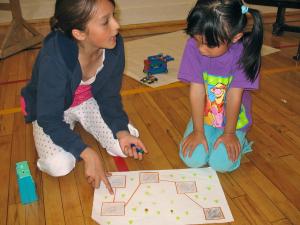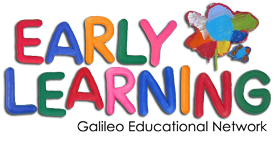
Close, trusting relationships with parents, teachers and caregivers is the key that unlocks the learning process for many children. The environment – to the degree that it’s learner, knowledge, assessment and community centered – plays an essential role. These four ideal learning conditions were emphasized in the research by John Bransford, Ann Brown and Rodney Cocking in their book How People Learn: Brain, Mind, Experience, and School.
This video is an excellent example of what happens when all four ideal learning conditions are put into action in a Grade 3 classroom.
Students also maintained a website chronicling this and other class projects. Parents and other interested people were invited to visit for updates on what students were doing.
The bridge building project was designed using Galileo Educational Network’s IO program, a tool allowing teachers to design, collaborate and share student learning.
Ideal Learning Conditions
Learner-Centered Environments
Learner-Centered Environments recognize each student brings their own perceptions about everything from subject matter and their level of understanding, to opinions on their communities and how others live. Teachers understand their students construct their own meanings and see their work as building a bridge between the subject matter and the student, all while keeping an eye on both ends of the bridge.
Knowledge-Centered Environments
Knowledge-Centered Environments intersect with learner-centered environments when instruction begins with a concern for students’ initial preconceptions about the subject to be studied. If this isn’t considered, it’s difficult to determine what the students will understand. Knowledge-centered environments allows for learning that leads to understanding, not merely the memorization of facts and figures. Knowledge-centered environments also focus on the kinds of information and activities that help students develop a deep understanding of different subjects, and how they may or may not be related.
Assessment-Centered Environments
Assessment-Centered Environments provide opportunity for feedback and revision. What is assessed must be aligned with specific learning goals. Teachers do a great deal of monitoring both group and individual work. They assess students’ abilities to link what they’re doing currently with other subject areas, as well as their daily lives. Students are also encouraged to assess their own work, and the work of their peers. Feedback is most valuable when students have the opportunity to use it to revise their thinking as they are working on a project. Feedback can be formal or informal in nature, and it can also involve the use of technology.
Community-Centered Environments
Community-Centered Environments are also important for learning. The community can be the classroom, the school, and the degree to which students and teachers feel connected to the wider community of their town or city, province, and the world.
The most effective learning takes place when each of the four strands support one another. For example, students may be learning something valuable, but one cannot tell unless there is alignment between what is being learned, and any assessment to measure it. Similarly, students may be learning things others don’t value, unless the curriculum and its assessment practices are aligned with the broader learning goals of the community. When principals and teachers define a common vision for the entire school, student learning can improve. (Barth, 1988, 1991; Peterson et al., 1995).

